Panasonic Lumix DMC-LX2
-
-
Written by Gordon Laing
Panasonic Lumix DMC-LX2 wide-angle uniformity comparison
Outdoor / Resolution / Noise / Noise 2 / Corner sharpness / Fringe & macro / Geometry / Vignetting
| Support Camera Labs by shopping via these links |
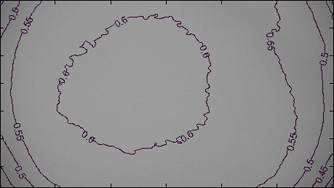 | To measure and compare the Panasonic Lumix LX2’s lens vignetting and light fall-off we photographed a white target with a highly diffused custom filter using it and a number of rival models. Here are the results for each camera with their built-in lenses set to their widest focal lengths with the apertures wide open and the focus set to infinity. The images were analysed with Imatest and the full areas presented here at a reduced resolution. Bigger percentages are better. | |
|
6.3-25.2mm at 6.3mm f2.8 Mean corner fall-off: 68.9% (16:9 aspect ratio) Mean corner fall-off: 88% (4:3 aspect ratio) | ||
| The image above was taken with the Panasonic Lumix LX2 zoomed-out to 6.3mm with its aperture wide open. Set to a 16:9 aspect ratio as pictured, the light falls off in the corners to an average of 68.9% of the center measurement. For comparative purposes, we repeated the test in 4:3 mode which delivered a better result of 88% by avoiding the extremities of the lens. On this level playing-field, the LX2 comfortably out-performs all the cameras below, and even when recording a much wider frame delivers a result only slightly below the others. |
Canon PowerShot A620 |
Fujifilm FinePix F30 |
Panasonic DMC-TZ1 | ||
 | 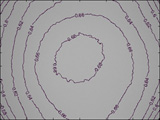 | 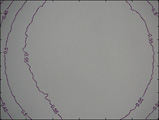 | ||
|
7.3-29.2mm at 7.3mm f2.8 Mean corner fall-off: 74.5% |
8-24mm at 8mm f2.8 Mean corner fall-off: 80.8% |
5.2-52mm at 5mm f2.8 Mean corner fall-off: 72.80% |
Panasonic Lumix DMC-LX2 telephoto uniformity comparison
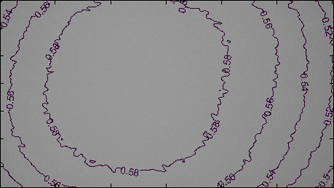 | To measure and compare the Panasonic Lumix LX2’s lens vignetting and light fall-off we photographed a white target with a highly diffused custom filter using it and a number of rival models. Here are the results for each camera with their built-in lenses set to their longest focal lengths with the apertures wide open and the focus set to infinity. The images were analysed with Imatest and the full areas presented here at a reduced resolution. Bigger percentages are better. | |
|
6.3-25.2mm at 25.2mm f4.9 Mean corner fall-off: 84% (16:9 aspect ratio) Mean corner fall-off: 89.7% (4:3 aspect ratio) | ||
The image above was taken with the Panasonic Lumix LX2 zoomed-in to 25.2mm with its aperture wide open. Set to a 16:9 aspect ratio as pictured, the light falls off in the corners to an average of 84% of the center measurement. For comparative purposes, we repeated the test in 4:3 mode which delivered a better result of 89.7% by avoiding the extremities of the lens. On this level playing-field, the LX2 matches the best of the cameras below, and even when recording a much wider frame still manages to beat some models. |
Canon PowerShot A620 |
Fujifilm FinePix F30 |
Panasonic DMC-TZ1 | ||
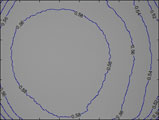 | 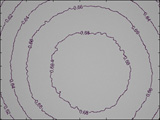 | 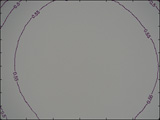 | ||
|
7.3-29.2mm at 29.2mm f4.1 Mean corner fall-off: 82.9% |
8-24mm at 24mm f4.9 Mean corner fall-off: 88.1% |
5.2-52mm at 52mm f4.2 Mean corner fall-off: 81.8% |





